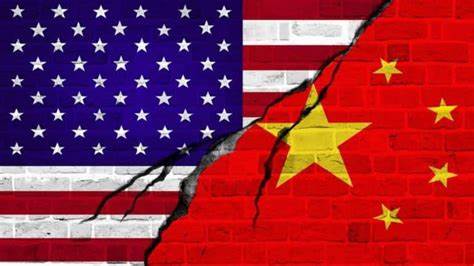US finalizes rules to prevent China from benefiting from $52 billion in chips funding

US finalizes rules to prevent China from benefiting from $52 billion in chips funding
The U.S. Commerce Department has issued final rules aimed at preventing semiconductor manufacturing subsidies from benefiting countries that are considered national security concerns, such as China and Russia. This development represents the last regulatory hurdle before the Biden administration can begin distributing $39 billion in subsidies designated for semiconductor production. The broader “Chips and Science” law allocates a total of $52.7 billion to support various aspects of the U.S. semiconductor industry, including production, research, and workforce development.
The newly established regulations are a response to growing concerns about the United States’ reliance on foreign semiconductor manufacturing and the potential security risks associated with it. Semiconductors are vital components in a wide range of industries, including technology, defense, and telecommunications, making their production and supply chain a national security priority.
The regulations are designed to establish safeguards or “guardrails” for recipients of U.S. funding. These include restrictions on investing in expanding semiconductor manufacturing in countries of concern, particularly China and Russia. Additionally, recipients of incentive funds are limited in their ability to engage in joint research or technology licensing efforts with foreign entities from countries of security concern.
The goal of these measures is to protect U.S. semiconductor capabilities and ensure that federal subsidies and investments are not inadvertently supporting countries or entities that may pose national security risks. By doing so, the U.S. aims to strengthen its semiconductor industry and reduce vulnerabilities in the supply chain.

The Department of Commerce took significant steps in October 2022 by implementing new export controls aimed at restricting China’s access to certain semiconductor chips produced using U.S. equipment. This move was part of a broader strategy to impede China’s technological and military advancements, reflecting concerns about the potential national security implications of semiconductor technology transfer.
Commerce Secretary Gina Raimondo emphasized the importance of ensuring that none of the funds or support provided by the U.S. government would contribute to China’s efforts to surpass the United States in technology and military capabilities. This underscores the high level of scrutiny and vigilance regarding the use of federal resources in the semiconductor sector.

One notable feature of these measures is the ability of the Commerce Department to reclaim federal awards if funding recipients are found to have violated the restrictions. This provides an enforcement mechanism to ensure that recipients adhere to the established rules and guidelines.
Secretary Raimondo also conveyed her commitment to expediting the approval process for awarding funds, reflecting the urgency with which the U.S. government views the semiconductor industry’s importance and the need to maintain a competitive edge in this critical sector.
Commerce Secretary Gina Raimondo has acknowledged the pressure associated with the rapid development and implementation of these regulations, but she has also emphasized the importance of getting them right. While there may be a sense of urgency, ensuring that the rules are properly formulated and implemented is a priority. If additional time is required to achieve that goal, she is willing to defend that decision, underscoring the necessity of maintaining the integrity and effectiveness of these measures.
To provide a clearer understanding of the regulations, here are some key points:
1. Restrictions on Semiconductor Manufacturing : The regulation imposes a 10-year prohibition on funding recipients significantly expanding semiconductor manufacturing capacity in foreign countries that are considered national security concerns. This restriction aims to prevent the transfer of advanced semiconductor manufacturing technology to such countries.
2. Limits on Joint Research and Technology Licensing : The rules place restrictions on funding recipients engaging in certain joint research or technology licensing efforts with foreign entities of concern. This is likely to prevent the sharing of sensitive semiconductor-related technology with countries or entities that may pose security risks.
3. Exceptions and Allowances: The regulations do provide some exceptions and allowances. They allow for participation in international standards development, patent licensing activities, and utilizing foundry and packaging services. These provisions likely aim to strike a balance between safeguarding sensitive technology and promoting collaboration and innovation within the semiconductor industry.
4. Clarification on Wafer Production : The rules clarify that wafer production is included within the scope of semiconductor manufacturing. This clarification ensures that any activities related to the production of semiconductor wafers are subject to the regulations and restrictions.
Overall, these regulations reflect a multifaceted approach to safeguarding U.S. semiconductor technology and ensuring that federal funding and support are not used in ways that could compromise national security interests.
The final rule issued by the U.S. Commerce Department establishes clear criteria for determining when semiconductor manufacturing capacity is considered to be materially expanded. It defines material expansion as any increase in semiconductor production capacity exceeding 5%. Furthermore, the rule places a strict limitation on the expansion of production capacity, explicitly stating that recipients of funding cannot add new cleanroom space or production lines if such additions would lead to an expansion of a facility’s production capacity beyond 10%.
In a significant move, the rule also identifies specific categories of semiconductors deemed critical to national security. This classification triggers more stringent restrictions on their production and export. The critical semiconductor categories include quantum computing chips, which represent the cutting edge of computing technology with implications for national security. Additionally, the rule encompasses current-generation and mature-node chips, which are integral components of various applications ranging from consumer electronics to defense systems. Moreover, chips designed for use in radiation-intensive environments and those serving other specialized military capabilities fall under the umbrella of critical semiconductors.
These regulations reflect a comprehensive effort to safeguard sensitive semiconductor technology and ensure that the expansion of manufacturing capacity in foreign countries aligns with U.S. national security interests. By defining material expansion, setting clear limits, and identifying critical semiconductor categories, the rule aims to strike a balance between fostering innovation and protecting vital national security assets.




